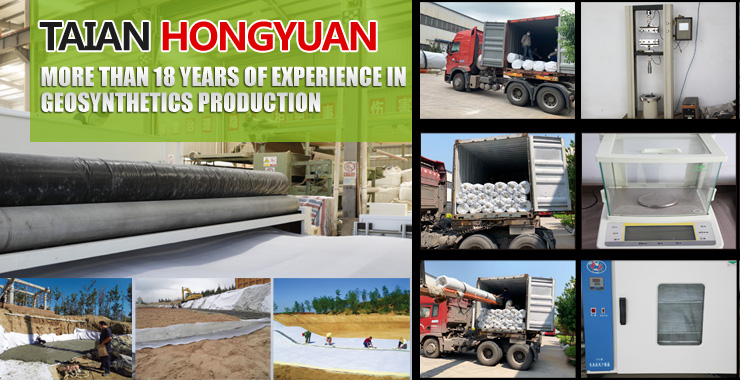
Comparative analysis of several geotextile materials. Geotextile is an important part of industrial textiles. It is mainly used in geotechnical engineering related to soil, rock and water. The raw materials used for geotextile should not only consider the physical and chemical properties required in the use environment, but also pay attention to Product Cost. In terms of performance, it must have good physical and mechanical properties, ultraviolet radiation resistance, hydrolysis resistance, high and low temperature resistance, chemical resistance, corrosion resistance, mildew resistance, good water permeability and so on.
At present, most geotextile materials are made of high molecular polymers. Among them, polypropylene materials (including fibers) are much used, accounting for more than 50% of the total amount of geotextiles, and more than 80% in the United States. Polyester raw materials (including polyester) account for 15% -30%, ranking second, and are used more in Japan. Polyethylene and polyamide fibers are used less, and vinylon is also used in China.
Polypropylene raw materials are much used for geotextiles, and the price is an important factor, but mainly because polypropylene has excellent acid resistance, alkali resistance, corrosion resistance, mildew resistance, and is not eroded by bacteria; and has a good wicking effect , Good permeability to water. Its mechanical properties are also very good, especially in recent years, domestic high-strength polypropylene filament has been developed, the strength reached 8g / D, making high-strength polypropylene woven geotextile and bag cloth are very suitable.
The disadvantage of using polypropylene as a geotextile raw material is poor UV resistance, especially sensitive to ultraviolet rays in the UVB band. Tests have shown that the strength of the insulating glass in spring and summer drops to 0 when exposed to light for 6 months, while the polyester can still maintain 78 %, Nylon is 73%, so polypropylene must be anti-aging before drawing, and it must be avoided in sunlight during use and transportation. In addition, the melting point of polypropylene is relatively low (around 135 ° C), so it is subject to certain restrictions when combined with sealing materials such as asphalt and flooring materials.
Polyester as a raw material for geotextiles has good mechanical and physical properties, a higher melting point than polypropylene, and resistance to ultraviolet radiation is also much better than polypropylene, so it is also an ideal raw material for geotextiles. Polyester fiber has good acid resistance and weak alkali resistance, but long-term contact with alkaline materials such as lime, cement, concrete, and alkaline soil will cause loss of strength, and its resistance to hydrolysis is also poor. Care should be taken when using it.
| Previous:The characteristics of Geosynthetic clay liner(GCL) | next:Construction notes of GCL |




 Tel
Tel
 Products
Products
 Contact
Contact
 Home
Home